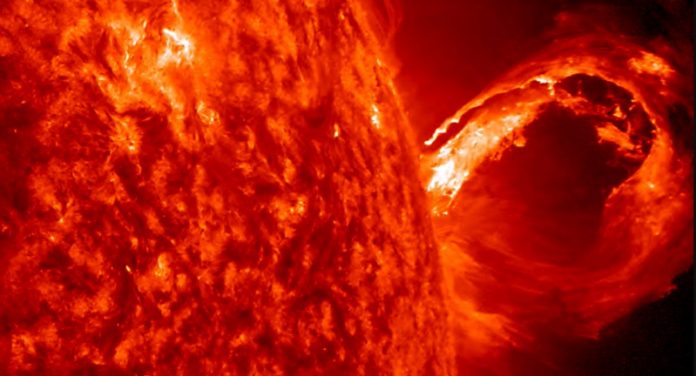Solar physicists predict another weak 11-year solar cycle ahead. At the same time, they expect the coming cycle to break the trend of weakening solar activity seen over the past 4 cycles, and they add there’s “no indication we are currently approaching a Maunder-type minimum in solar activity.”
A NOAA/NASA co-chaired international panel – charged with forecasting the upcoming 11-year solar cycle, Solar Cycle 25 – released a preliminary forecast on April 5, 2019. The consensus is that Cycle 25 will be similar in size to the current cycle, Cycle 24; in other words, it’s likely to be weak. These solar experts said they expect solar minimum – the period when the sun is least active – no earlier than July 2019 and no later than September 2020. They expect sunspot maximum to occur no earlier than the year 2023 and no later than 2026, with a minimum peak sunspot number of 95 and a maximum of 130. That’s in contrast to the average number of sunspots, which typically ranges from 140 to 220 sunspots per solar cycle. The panel also said in a statement that it has:
… high confidence that the coming cycle should break the trend of weakening solar activity seen over the past four cycles.
Panel co-chair Lisa Upton, solar physicist with Space Systems Research Corp., said:
We expect Solar Cycle 25 will be very similar to Cycle 24: another fairly weak cycle, preceded by a long, deep minimum. The expectation that Cycle 25 will be comparable in size to Cycle 24 means that the steady decline in solar cycle amplitude, seen from cycles 21-24, has come to an end and that there is no indication that we are currently approaching a Maunder-type minimum
The Maunder minimum is a period of much-reduced sunspot activity observed between the years 1645 and 1715. It coincided with the coldest part of what’s commonly called the Little Ice Age (c. 1500–1850) in the Northern Hemisphere, when, according to historians:
… the Thames River in England froze over during winter, Viking settlers abandoned Greenland, and Norwegian farmers demanded that the Danish king recompense them for lands occupied by advancing glaciers.
No one understands exactly how or even if reduced sunspots cause cooler weather on Earth, but speculation abounds. The question of the sun-Earth connection will not be so pressing if – following Cycle 25 – solar activity returns to normal, as these solar physicists suggest it will.













